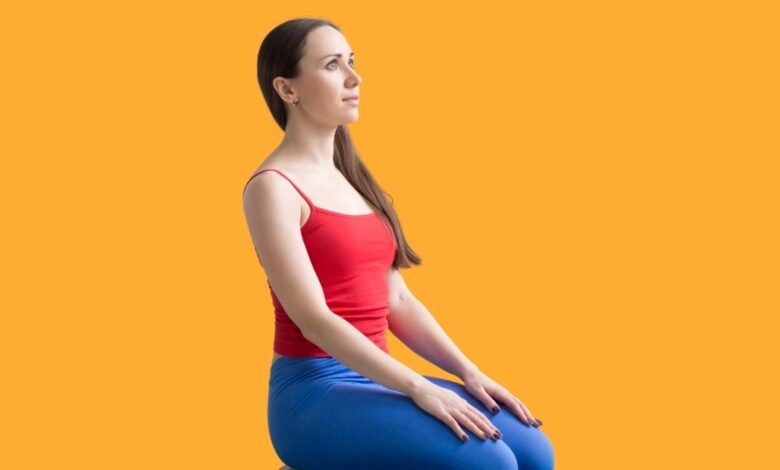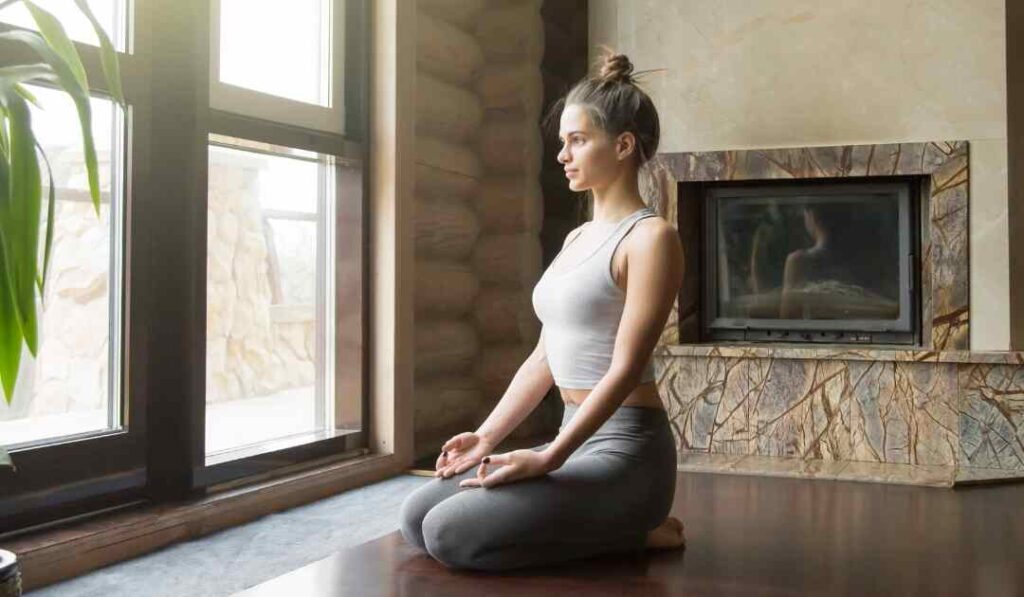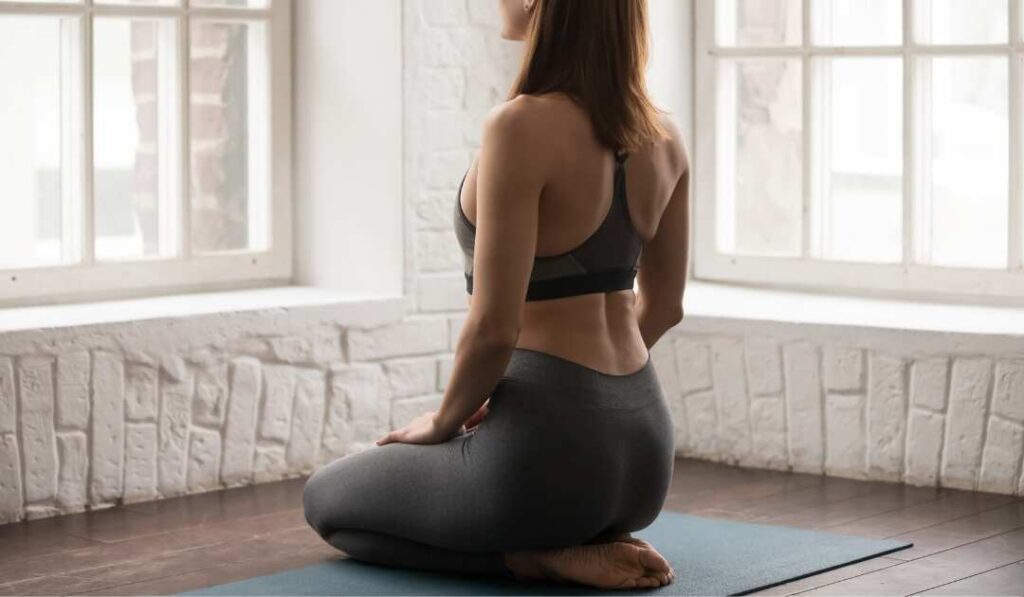
Vajrasana is a simple sitting yoga pose. Its name comes from the Sanskrit word vajra, which means thunderbolt and is also the weapon of the Indian Vedic deity Indra.
It is one of the easiest yoga poses, where you kneel and sit back on your legs. Often some other meditations are done on this pose, which is said to help your body become as strong as vajra.
This article is to learn the steps to do Vajrasana and discuss a few Vajrasana benefits.
| Sanskrit | Vajrasana / वज्रासन |
| English | Adamantine Pose |
| Pronunciation | vahj-RAH-sah-na |
| Vajra | Thunderbolt |
| Asana | Pose |

Steps to perform Vajrasana
Below is a list of easy steps to perform vajrasana:
- Firstly, knee down on the floor. You can use a folded blanket or a yoga mat for comfort.
- Then, take the weight off your knees by gently sitting back on your legs. (refer to attached vajrasana images)
- Keep four fingers gap between your knees and sit erect with your glutes resting on your heels. The thighs should rest on the calves of the same leg, respectively, and the big toes should touch each other.
- Finally, gaze forward with your head straight and chin parallel to the ground. Keep your back straight and rest your hands on your knees.
- Now, concentrate on your breathing process. Leisurely inhale and exhale air, in and out of your chest.
- Hold this position for as long as you are comfortable. With practice, you can prolong the time to around 30 minutes.
Vajrasana Benefits
Below are a few important benefits of vajrasana:
Good for our Digestive System:
Contrary to other asanas, vajrasana can be performed post a meal. Practicing this asana increases the blood circulation in the stomach area by obstructing blood flow to the lower half of our body. Increased blood circulation improves the function of the digestive organs effectively and relieves constipation.
Vajrasana is also effective against acidity and flatulence (gas). It also facilitates better absorption of nutrients by our body.
Relieves Low Back Pain:
Vajrasana provides relief from occasional back pain and discomfort as it strengthens and tones our lower back muscles. It also aids in relieving pain caused by sciatica.
Relieves Rheumatic Pain:
Regular practice of vajrasana improves the flexibility of the thigh and foot muscles and the muscles around the knees, ankles, and hip. Thus, it helps to relieve the rheumatic pain in these areas due to stiffness.
Strengthens Pelvic Floor Muscles:
Performing Vajrasana increases the blood flow to the pelvic region thus, strengthens the pelvic floor muscles. Therefore, this pose is beneficial to women suffering from stress urinary incontinence. It also helps to ease out labor pains and menstrual cramps.
Helps to Calm Our Mind and Improves Sleep:
Sitting in this asana reduces stress and anxiety, thus helps us in getting a good night’s sleep. It also calms our minds and improves concentration.
Reduces Hypertension (High Blood Pressure):
Regular practice of Vajrasana helps to reduce stress, anxiety, and hypertension. Therefore, it diminishes the chance of any cardiovascular disorders.
Prevents Obesity:
Vajrasana boosts our metabolism and helps to lose belly fat. It is also effective in lowering BMI (Body Mass Index) and Obesity.

Precautions and Contraindications for Vajrasana :
- Avoid vajrasana if you have knee pain due to any underlying medical condition or any knee surgery.
- People with conditions like disc prolapse or slip disc should avoid this asana.
- Although pregnant women can practice vajrasana, they should keep a little wider gap between their knees to avoid putting pressure on their abdomen.
- People with stiffness in the foot, ankle, or knees should also keep away from performing vajrasana.